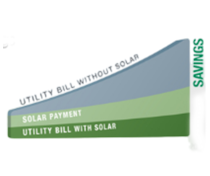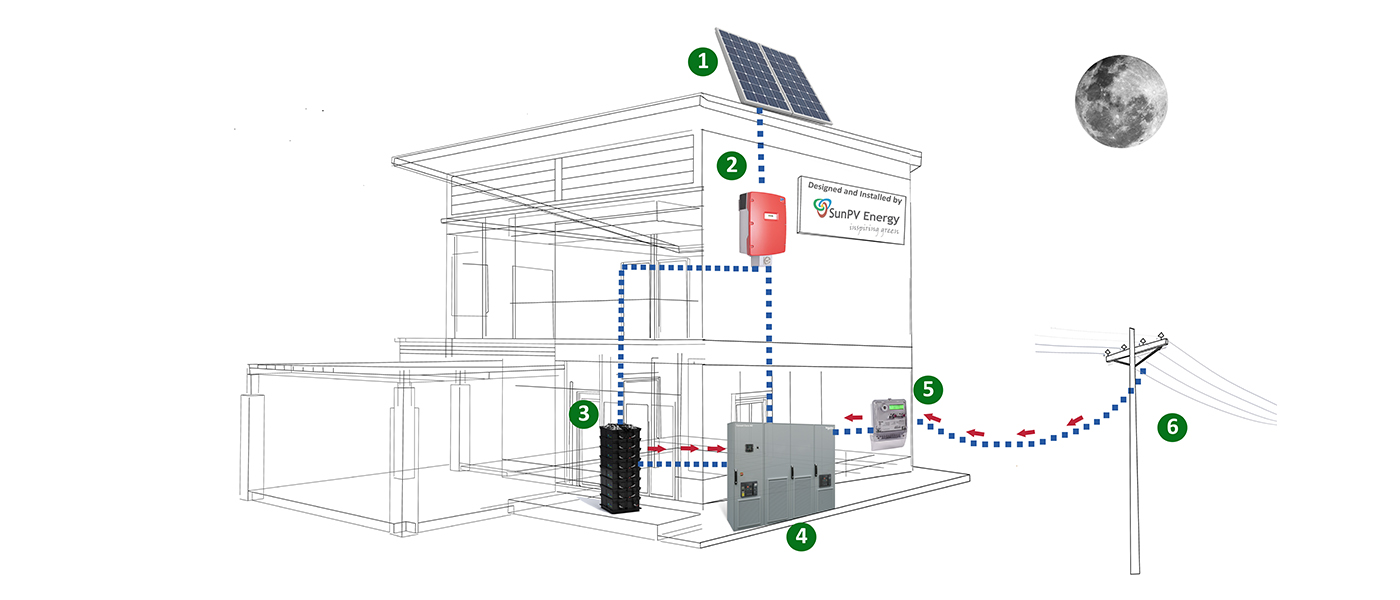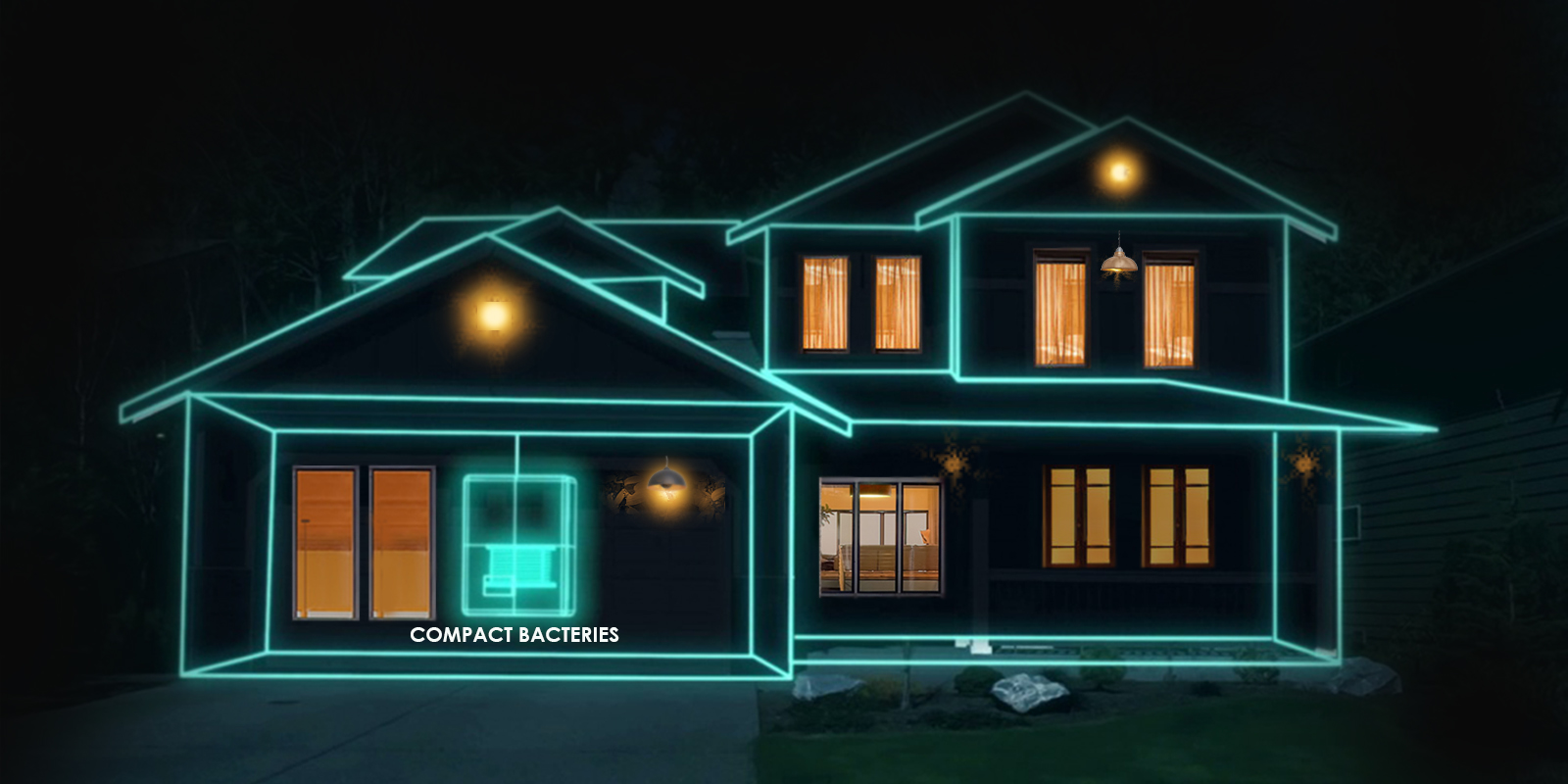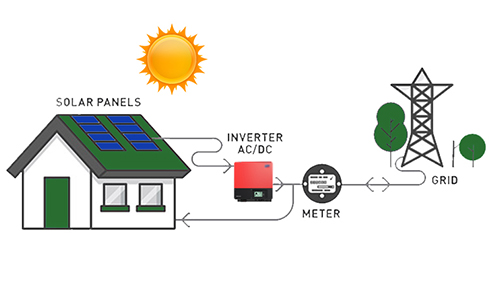Solar PV Power Solutions
Power Your Home, Your Way
Solar PV system complements your home’s architecture while turning sunlight into electricity.With an integrated battery bank, energy collected during the day is stored and made available any time, effectively.

Solar Benefits

Reduce Energy Cost
- Protection from rising energy prices

Reduce Electricity Bill
- Easy to Install
- Affordable
- Savings

Earn Money By Exporting
- Get paid for the Energy Export
- Continous Revenue
- Return On Investment

Uninterrupted Power
- 24x7 Clean Power
- Zero Surges
- Device Protection

Tax Benefits
- Accelerated Depreciation
- Taxless Income

Energy Monitoring
- Remote Data Monitoring

Energy Management
- Consumption
- Generation
- Storage Optimization

Reduce Carbon Foot Prints
- Reduce Carbon Emission
- Eco Friendly
How Solar Works
See how solar energy works with the grid to power your home at various times of the day

During the day, your system will generate more power than you are consuming. This extra power goes back to the grid

At night, while you’re not producing solar energy, your home gets its power from battery and grid.

During cloudy or rainy days, generation will be less. When you’re consuming more power than your solar is producing, you may still draw power from the grid.

-
Solar Panels
The solar panels are made up of photo-voltaic (PV cells, which convert sunlight into direct current (DC electricity throughout the day
-
Inverter
This device converts the DC electricity generated by the solar panels into the alternating current (AC) electricity
-
BATTERY BANK
Compact and stackable, it provides backup power during utility outagesƒpower cuts, energy collected during the day is stored and made available any time
-
Electrical Panel
The AC electricity is sent from the inverter to electrical panel to power loads and appliances with solar energy
-
Utility Meter
The utility meter measures and records the energy use, It records both the units consumed and the excess units which is exported
-
Utility Grid
This device converts the DC electricity generated by the solar panels into the alternating current (AC) electricity
Protect Your Home From Frequent Power Cuts

Power stack batteries provides backup power during utility outages Compact, Maintenance free, stackable, highly efficient and long life Power stack batteries come ready to integrate seamlessly with solar, enabling you to self-power your home.
Photovoltaic Grid−Connected System Architectures

The traditional grid-tied architecture of photovoltaic systems concentrates all the electronics in the central inverter. This is the centralized approach. To gain in terms of global system energy production reliability, safety communication and monitoring, the trend today is to move towards the distributed approach where the electronics is partially or fully distributed close to each panel.
The following three photovoltic grid-tied architecture are analyzed here:
- Strong and central inverter based architecture (Centrlized approach)
- Power optimizer based architecture ( Partially distributed approach)
- Microinverter based architectures(fully distributed approach)
Export And Earn Money
The surplus solar power generation will be exported to the local utility grid; DISCOMS will pay consumers as per the tariff determined by the Electricity Regulatory Commission.

Net Metering
The net value of what you produce and what you consume There is an agreement between the Solar Power System owner and Energy utility company, which allows the owner to:
- Buy Deficit energy needs from the utility company.
- Sell any excess production to the utility company at the pre-decided price.
- With this, the customer pays the difference amount and thus saves on energy bills.
Gross Metering
In Gross-metering
- The PV system is directly connected to the utility grid.
- The entire output is transferred to the grid.
- Utility companies then provide you with credit for the energy received according to predetermined rates.
- Most of the states in India have discontinued this system.

How Solar Ppa Works
-
SunPV Energy provides a solar consultation that includes a site survey and energy consultation. -
You sign a Power Purchase Agreement (PPA) with DISCOM. -
We designs, installs and connects the solar system to the utility grid at little to no -
You get paid for the power you export at a tariff determined by the utility company. -
You get paid for the power you export at a tariff determined by the utility company.


